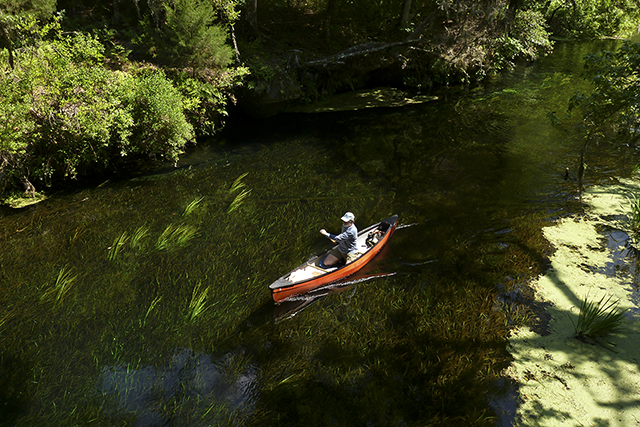Understanding the Issue
While algal blooms occur naturally, scientists say both the frequency and intensity of current harmful algal bloom (HABs) activity is a signal of bigger problems. A contributing factor to the increase is heightened levels of phosphorous and nitrogen in waterways. Often, these elements run off from land surrounding drainage basins. Major sources of this excess in nutrients include urban land use, agriculture, waterway sediment, and carbon emissions.
All About Algal Blooms
Algae are microscopic organisms that live on land, in fresh water, and in the ocean. Essential to healthy lakes, estuaries, and all aquatic systems, algae provide food and oxygen that all water organisms need to survive. An algal bloom is an over-growth of algae in a water body. Blooms occur in both fresh and saltwater. The result is a water stain of bright green, red, or brown. In some cases, algal blooms are invisible to the naked eye.

An outdoor enthusiast paddles a canoe at Ichetucknee Springs State Park | UF/IFAS photo
Blooms are common in Florida, especially in the warmer months. While not all blooms are harmful, some produce toxins that kill fish and wildlife, and could make people sick. Blooms can grow large enough to deplete oxygen and block light to organisms below the water's surface. In addition to ecosystem damage, blooms are unsightly and often negatively impact recreation endeavors. This results in slowed or even halted economic growth for the affected regions.
UF/IFAS is working with researchers and extension personnel across the state to identify and address sources of the Florida's HABs problem.

